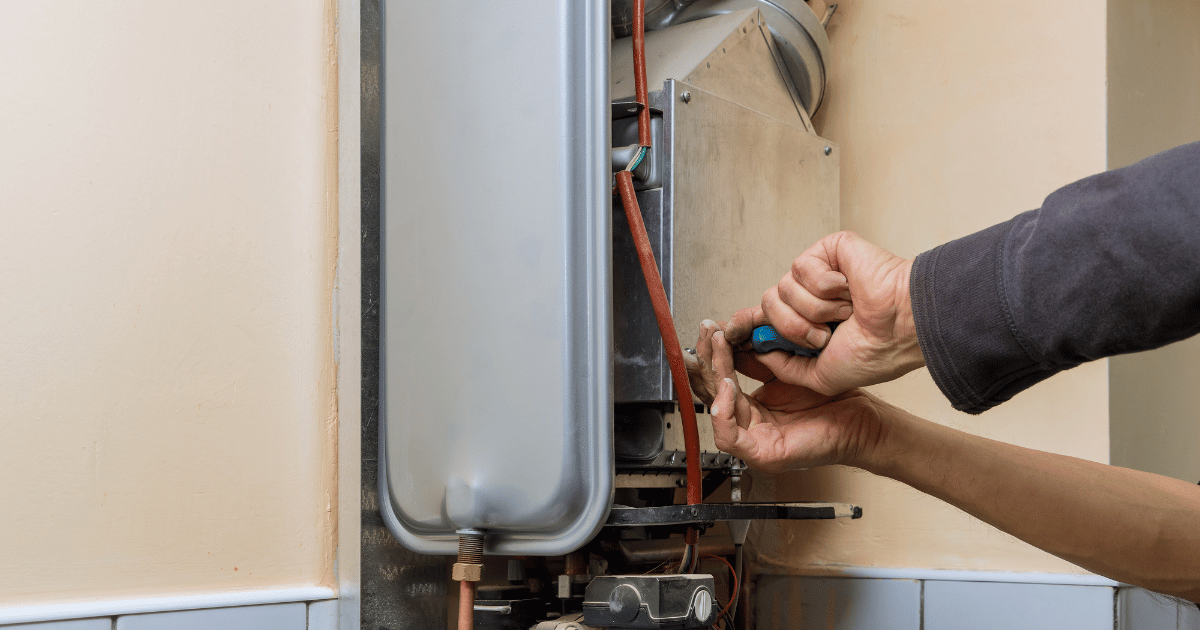Important Care Tips for Your Home's Hot Water SystemWays to Effectively Maintain Your Home's Hot Water System
Click HereWe've noticed the article involving Tips on Maintaining a Water Heater directly below on the internet and thought it made good sense to talk about it with you on my blog.

Hot water is important for day-to-day convenience, whether it's for a refreshing shower or washing recipes. To ensure your warm water system runs successfully and lasts longer, normal maintenance is vital. This article supplies practical ideas and insights on exactly how to keep your home's hot water system to prevent interruptions and expensive fixings.
Introduction
Preserving your home's warm water system may appear challenging, however with a couple of easy steps, you can guarantee it runs efficiently for years to come. This guide covers whatever from comprehending your warm water system to do it yourself maintenance ideas and recognizing when to call in professional assistance.
Value of Preserving Your Warm Water System
Normal upkeep not just expands the lifespan of your hot water system however additionally guarantees it operates efficiently. Overlooking upkeep can bring about decreased efficiency, higher power costs, and also premature failure of the system.
Indications Your Warm Water System Demands Maintenance
Knowing when your hot water system needs attention can avoid major issues. Watch out for indications such as inconsistent water temperature, odd sounds from the heating system, or corroded water.
Purging the Hot Water Heater
Purging your hot water heater removes sediment buildup, improving effectiveness and lengthening its life.
Monitoring and Changing Anode Rods
Anode poles avoid rust inside the storage tank. Examining and replacing them when worn out is crucial.
Complex Concerns Calling For Expert Help
Instances consist of major leaks, electrical troubles, or if your hot water heater is consistently underperforming.
Routine Professional Maintenance Conveniences
Specialist upkeep can consist of complete inspections, tune-ups, and ensuring conformity with safety criteria.
Examining and Adjusting Temperature Level Settings
Adjusting the temperature settings makes sure optimum efficiency and security.
DIY Tips for Upkeep
You can do several upkeep tasks yourself to maintain your hot water system in leading problem.
Checking for Leakages
Routinely check pipelines and connections for leakages, as these can cause water damage and greater costs.
Understanding Your Warm Water System
Before diving into upkeep tasks, it's practical to understand the fundamental parts of your warm water system. Generally, this consists of the hot water heater itself, pipelines, anode poles, and temperature level controls.
Regular Monthly Upkeep Tasks
Regular monthly checks can help catch small issues prior to they escalate.
Checking Stress Alleviation Valves
Evaluating the pressure safety valve ensures it functions correctly and stops extreme stress accumulation.
Insulating Pipelines
Protecting warm water pipelines reduces warmth loss and can save power.
When to Call a Professional
While DIY upkeep is useful, some problems require specialist knowledge.
Conclusion
Normal upkeep of your home's hot water system is essential for performance, long life, and price financial savings. By complying with these suggestions and knowing when to seek specialist aid, you can ensure a reliable supply of warm water without unforeseen interruptions.
How to Maintain an Instant Hot Water Heater
Before tinkering with your hot water heater, make sure that it’s not powered on. You also have to turn off the main circuit breaker and shut off the main gas line to prevent accidents. Also turn off the water valves connected to your unit to prevent water from flowing into and out of the appliance. 2. When you’re done, you have to detach the purge valves’ caps. These look like the letter “T” and are situated on either side of the water valves. Doing so will release any pressure that has accumulated inside the valves while at the same time avoid hot water from shooting out and burning your skin. 3. When the purge valves’ caps are removed, you have to connect your hosing lines to the valves. Your unit should have come with three hoses but if it didn’t, you can purchase these things from any hardware or home repair shops. You can also get them from retail stores that sell water heating systems. Read the user’s manual and follow it to complete this task properly. When the hosing lines are connected, open the purge port’s valves. 4. You should never use harsh chemical cleaners or solutions when cleaning your unit. Make use of white vinegar instead. It should be undiluted and you’ll probably use about 2 gallons. 5. Now flush your water heater. This task should probably take about 40 minutes. We can’t give you specific directions for this because the procedure is carried out depending on the type, model and brand of your heater. With that being said, refer to the user’s manual. 6. When you’re done draining the unit, you have to turn off the purge port valves again. Remove the hosing lines that you earlier installed on each of the water valves. Put the valve caps (purge port) back in their respective places and be very careful so as not to damage the rubber discs that are found inside these caps. 7. Now that everything’s back in place, check your user’s manual again to find out how to reactivate your water heating system. 8. Once it is working, turn one of your hot water faucets on just to let air pass through the heater’s water supply pipes. Leave the tap on until water flows smoothly out of it. https://www.orrplumbing.com/blog/2014/september/how-to-maintain-an-instant-hot-water-heater/

As a devoted reader on How to Maintain Your Water Heater & Prolong its Life, I figured sharing that topic was mandatory. Don't hesitate to take the opportunity to promote this post if you enjoyed reading it. Thanks a bunch for being here. Return soon.
Call Today